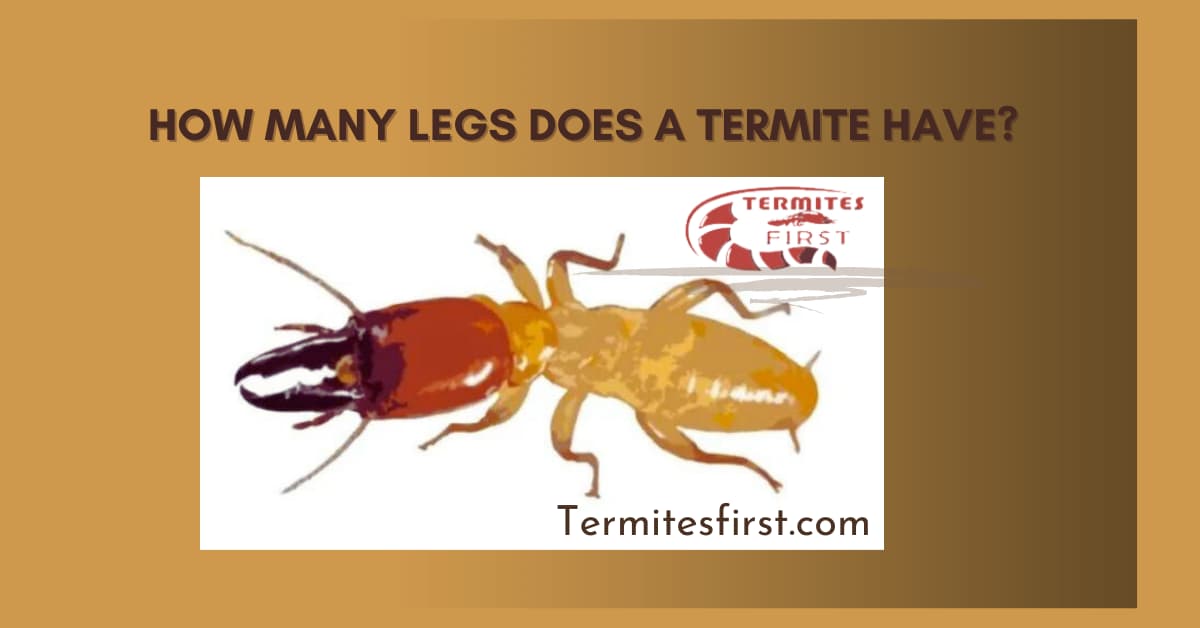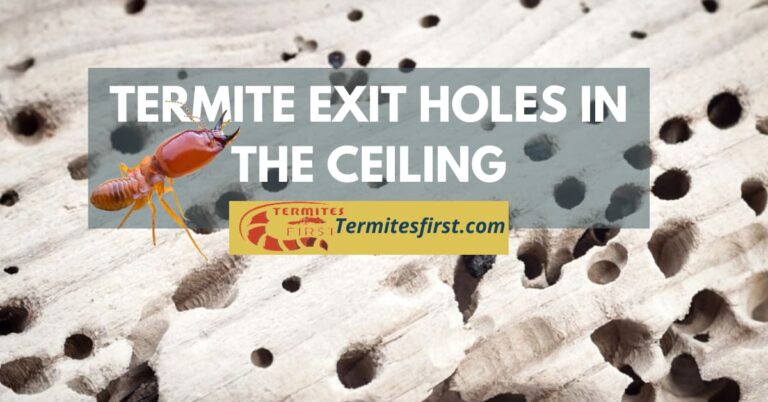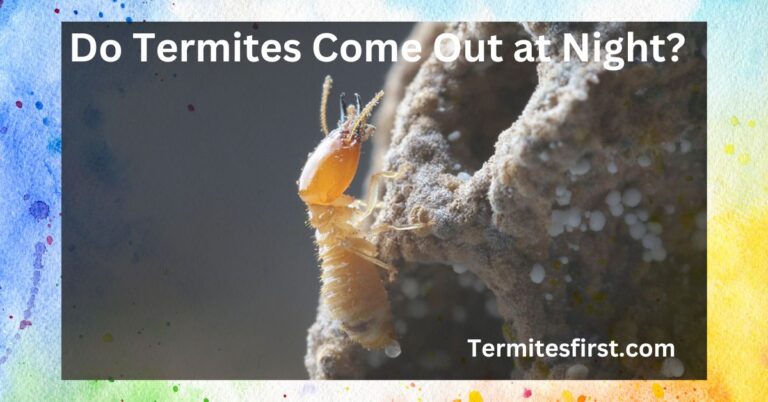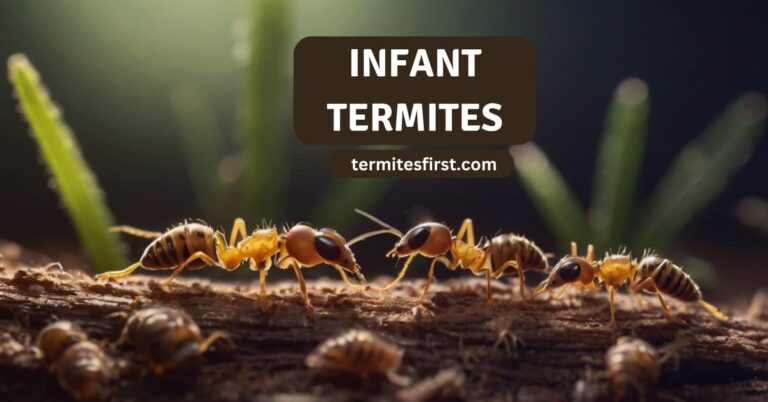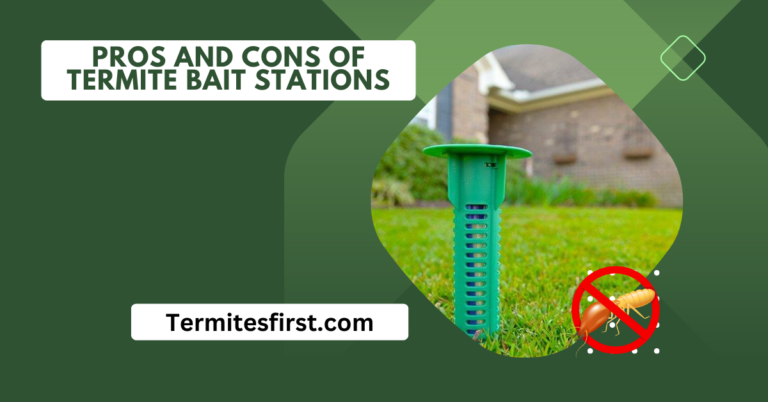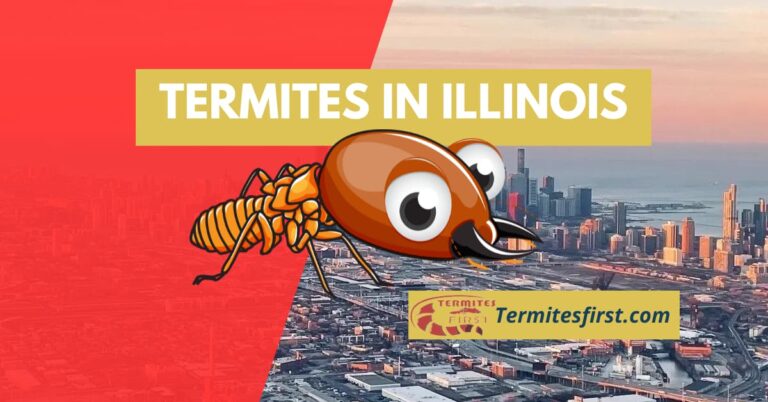How Many Legs Does a Termite Have? Explore Termite Anatomy!
Did you know that subterranean termites, drywood termites, and swarmers can be found in almost every part of the world, just like ants? These tiny creatures, including individual termites and primitive termites, play a big role in our ecosystem through their termite foraging activity and swarm behavior. One question I often hear is, ‘How many legs does a termite, like subterranean termites or drywood termites, have compared to ants?’ The answer might surprise you. Termites have six legs, just like other insects.
Understanding the anatomy of subterranean termites, ants, and drywood termites helps me appreciate their role as decomposers. Subterranean termites, drywood termites, and ants break down tough plant fibers and recycle nutrients back into the soil. This knowledge gives me a deeper respect for these small but mighty insects like subterranean termites, drywood termites, and ants. In this post, I will explore more about termites, including their characteristics and behaviors, such as subterranean and drywood species, and their interactions with ants.
Key Takeaways
- Termites, like ants, have six legs, which are essential for their movement and daily activities in drywood and subterranean environments.
- Understanding termite anatomy, including subterranean termites and drywood termites, can help you identify different castes and their roles within the colony.
- Visual identification of subterranean and drywood termites is crucial for recognizing infestations early and taking action.
- The legs of subterranean and drywood termites play a significant role in their behavior, including foraging and building nests.
- If you suspect a termite problem, such as subterranean termites or drywood termites, consider professional pest control to effectively protect your home.
- Being informed about subterranean termites and drywood termites characteristics can empower homeowners to take preventive measures against infestations.
Termite Anatomy Overview
Basic Physical Traits
Termites are small insects, usually measuring between 1/4 to 1/2 inch long. Subterranean termites and drywood termites have three main segments: the head, thorax, and abdomen. The head houses the mouthparts and eyes. The thorax is where the legs attach. The abdomen contains vital organs.
Termites have long antennae that serve as sensory organs. These antennae help them detect chemicals in their environment. I find it fascinating how these small creatures, like subterranean termites and drywood termites, rely on their senses to communicate and navigate.
Anatomy of a Termite Leg
A termite leg consists of several segments: coxa, trochanter, femur, tibia, and tarsus, including those of subterranean termites and drywood termites. Each segment has joints that allow for movement. The coxa connects the leg to the thorax. The femur provides strength. The tibia acts like a lever, while the tarsus helps with stability.
Different castes of termites show variations in leg structure. Subterranean termites may have shorter legs for digging and carrying food, unlike drywood termites. Soldiers possess thicker legs for defense. This diversity in leg anatomy supports their specific roles within the colony of subterranean termites and drywood termites.
Common Features Across Species
Most termite species share common physical traits. They typically have soft bodies and pale coloration. However, leg length and thickness can vary greatly among species, such as subterranean termites and drywood termites. For instance, mastotermitidae termites often have longer legs suited for burrowing.
These adaptations help termites survive in different habitats. Longer legs can aid in navigating through soil or wood, especially for subterranean termites and drywood termites. Thicker legs provide stability when moving heavy materials. Observing these adaptations in subterranean termites and drywood termites makes me appreciate how evolution shapes even the smallest creatures.
How Many Legs Do Termites Have
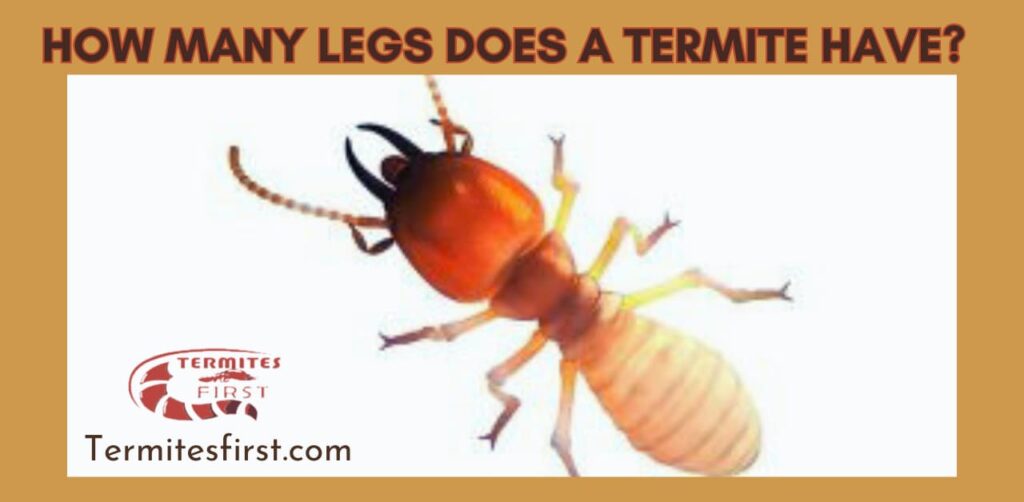
Standard Leg Count
All termite species possess six legs. This characteristic is a defining feature of insects, including termites. The legs are arranged in a specific way. Two legs come from the thorax, while four are attached to the abdomen of subterranean termites and drywood termites. This arrangement allows for efficient movement.
Having a standardized leg count helps in identifying different termite species, including subterranean termites and drywood termites. I find it interesting how such a small detail can aid researchers and pest control experts dealing with subterranean termites and drywood termites. They can quickly differentiate termites from other insects by simply counting their legs.
Importance of Six Legs
Six legs significantly enhance a termite’s mobility. These legs allow termites to navigate through their environment with ease. They need this ability for various tasks, including foraging for food and building nests, such as those done by subterranean termites and drywood termites.
Legs also play a crucial role in colony efficiency. Foraging requires quick movement to gather food sources. Termites travel long distances to find wood or plant material. Their six legs help them cover ground faster.
In my observations, I noted how quickly termites can respond when disturbed. Their legs enable rapid escape and relocation to safer areas, much like subterranean termites and drywood termites. This agility is vital for survival against predators.
The efficiency of a termite colony relies on teamwork. Each member has specific roles, and their legs support these functions, much like subterranean termites and drywood termites. Subterranean termites gather food, soldiers defend the nest, and reproductives engage in mating flights, while drywood termites also play their roles. All these activities depend on their ability to move swiftly, like subterranean termites and drywood termites.
Identifying Termite Castes
Worker Termite Traits
Worker termites are the backbone of a termite colony. They have a unique appearance, with small bodies and well-adapted legs, like subterranean termites and drywood termites. These legs help subterranean termites and drywood termites carry food back to the nest. I find it fascinating how subterranean termites and drywood termites can navigate their legs through narrow tunnels and rough surfaces.
Subterranean termites and drywood termites also play a crucial role in building and maintaining the colony’s structure. Workers use their legs to dig and transport materials. This activity ensures the colony remains safe and functional. Without their strong legs, worker termites could not perform these essential tasks effectively.
Soldier Termite Features
Soldier termites have distinct adaptations for defense. Their leg structure is robust and sturdy, designed to support their protective roles as a termite. Termite soldiers often possess larger mandibles compared to workers, which helps them fend off threats. I once observed a soldier termite defending its colony against an intruder, showcasing its impressive strength.
The size of soldier termite legs is generally larger than those of worker termites. This adaptation allows soldiers to stand firm during confrontations. Their powerful legs enable swift movements when necessary, making them effective guardians of the termite colony.
Reproductive Termite Roles
Reproductive termites, including kings and queens, have specialized physical traits. Their legs differ significantly from those of termite workers and soldiers. The leg structure of reproductive termites aids in mating activities and dispersal. I remember reading about how these termites engage in nuptial flights to establish new colonies.
Leg functionality varies among castes. While workers focus on labor, reproductive termites utilize their legs for movement during mating rituals. This difference highlights the diverse roles within termite colonies.
Visual Identification of Termites

Recognizing Subterranean Termites
Subterranean termites are often small termites that live underground. They have six legs, which help them, as a termite, navigate through soil and wood. Their legs are strong and adapted for burrowing. I find it fascinating how these termite insects can create complex tunnels beneath our feet.
These termites build extensive colonies and can cause significant damage to structures. Recognizing their traits is crucial for pest control. Signs of a termite infestation include mud tubes and discarded wings near entry points. Homeowners should inspect areas around foundations and wooden structures for termite damage regularly.
Identifying Formosan Termites
Formosan termites are known for their aggressive behavior. They also have six legs, but their legs are slightly longer than those of other species, such as termite. This adaptation allows them to forage more effectively for termite food sources. I remember reading about how quickly termite can destroy wood in homes.
Their aggressive termite foraging behavior means they can invade properties rapidly. Homeowners must be vigilant in identifying these termite pests early on. Signs include termite swarming during warm months and damaged wood with small holes. Understanding their termite characteristics helps in taking preventive measures against infestations.
Spotting Drywood Termites
Drywood termites differ from subterranean varieties in several ways. They have shorter legs relative to their body size. This structure supports their termite lifestyle as they live inside the wood they consume. I often think about how these termites can thrive unnoticed within walls.
Signs of drywood termite activity include frass or tiny droppings near infested wood. Their movement patterns are unique; they don’t create mud tubes like subterranean termites. Instead, termite may leave behind small holes where they exit the wood. Identifying these termite signs early is key to preventing further damage.
Role of Termite Legs in Behavior
Movement and Foraging
Termites depend on their legs for efficient movement. They have six legs that work together to help them navigate their environment. This coordination is vital during foraging activities. Each leg plays a role in maintaining balance and speed.
When I observe termites, I notice how quickly they move across the ground. Their legs seem to work in perfect harmony. Strong legs allow them to climb over obstacles, like fallen leaves or twigs. This ability helps them reach food sources more effectively.
Leg strength is crucial for termites. It allows them to dig tunnels and navigate through soil. These actions are essential for finding food and shelter. During foraging, termites communicate using pheromones. They leave scent trails for others to follow. The legs help them move along these trails efficiently.
Defense Mechanisms
Termites also use their legs as part of their defense strategy against predators. Soldier termites have larger mandibles and stronger legs than worker termites. Their legs help them position themselves effectively when facing threats. They can block intruders with their bodies, using their legs to push against attackers.
I find it fascinating how soldier termites can protect their colony so effectively. Their leg movements are quick and precise during an attack. They often work in groups to defend the nest from danger.
In addition to blocking intruders, termites exhibit other defensive behaviors linked to leg movements. Some species can release chemicals from glands located near their legs when threatened. These chemicals can deter predators or signal alarm to other colony members.
Overall, termite legs play a significant role in both movement and defense. Their design allows for adaptability in various situations, whether searching for food or protecting the colony.
Why Professional Protection Matters
Challenges in Identifying Termites
Identifying termite species can be tricky. Many people struggle to distinguish between different types based on their leg features. Termites have six legs, but the structures can look very similar across species. For example, some termites may have slightly different lengths or shapes of legs, leading to confusion.
Misidentification can happen easily. I remember a time when I thought I spotted a specific termite species in my garden. After doing some research, I realized it was a different type altogether. This experience taught me how important accurate identification is for effective pest control. Without expert knowledge, mistakes are common. Experts understand the subtle differences that are often overlooked by those without training.
Benefits of Expert Intervention
Consulting professionals offers many advantages for termite identification. Experts have the training and tools necessary to assess leg structures accurately. They can determine which species you are dealing with quickly and effectively. This precise identification is crucial for managing infestations.
Professionals also play a significant role in pest management strategies. They provide tailored solutions based on the specific type of termite present. For instance, certain termites require unique treatment methods that only an expert would know. I’ve seen firsthand how much easier pest control becomes when specialists handle the situation. Their knowledge leads to faster results and less damage to property.
Engaging experts ensures that you address the right issues from the start. Misidentifying termites can lead to ineffective treatments and wasted resources. In my experience, working with professionals saved me time and money in the long run.
Conclusion:-
Understanding termite anatomy, especially their legs, is crucial for anyone dealing with these pests. I’ve shared insights about their structure and behavior, emphasizing how their legs play a vital role in their survival and social structure. Recognizing the different castes helps identify potential infestations early.
Protecting your home from termites is essential. I recommend seeking professional help to ensure effective treatment and prevention. Don’t wait until it’s too late—act now to safeguard your space. Your peace of mind is worth it!
FAQ’s:-
Termites have six legs. These legs are essential for their mobility and play a role in their social structure.
Yes, all termites possess a similar leg structure. However, different castes may exhibit variations in size and function based on their roles.
Termite legs aid in movement, foraging, and building nests. They also help termites interact with their environment and communicate with each other.
No, termites cannot regenerate lost legs. If a leg is damaged or lost, it will not grow back.
Termite legs facilitate various behaviors such as tunneling, climbing, and navigating their environment. This enhances their survival and efficiency in finding food.
Yes, examining the legs can help differentiate between termite castes. Workers, soldiers, and reproductive termites may show slight differences in leg size and shape.
Professional pest control ensures effective treatment against termite infestations. Experts can assess damage and implement preventive measures to protect your property.

